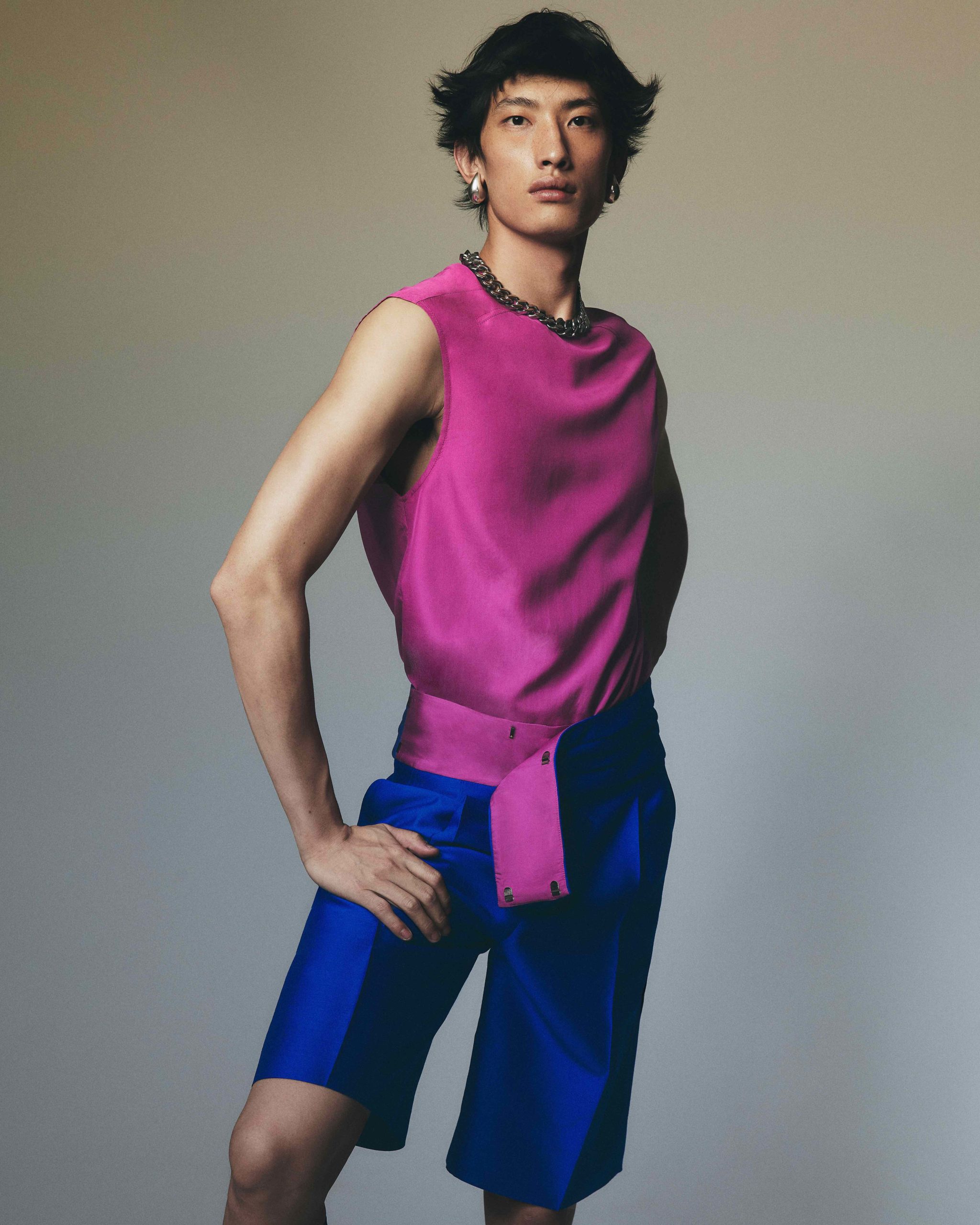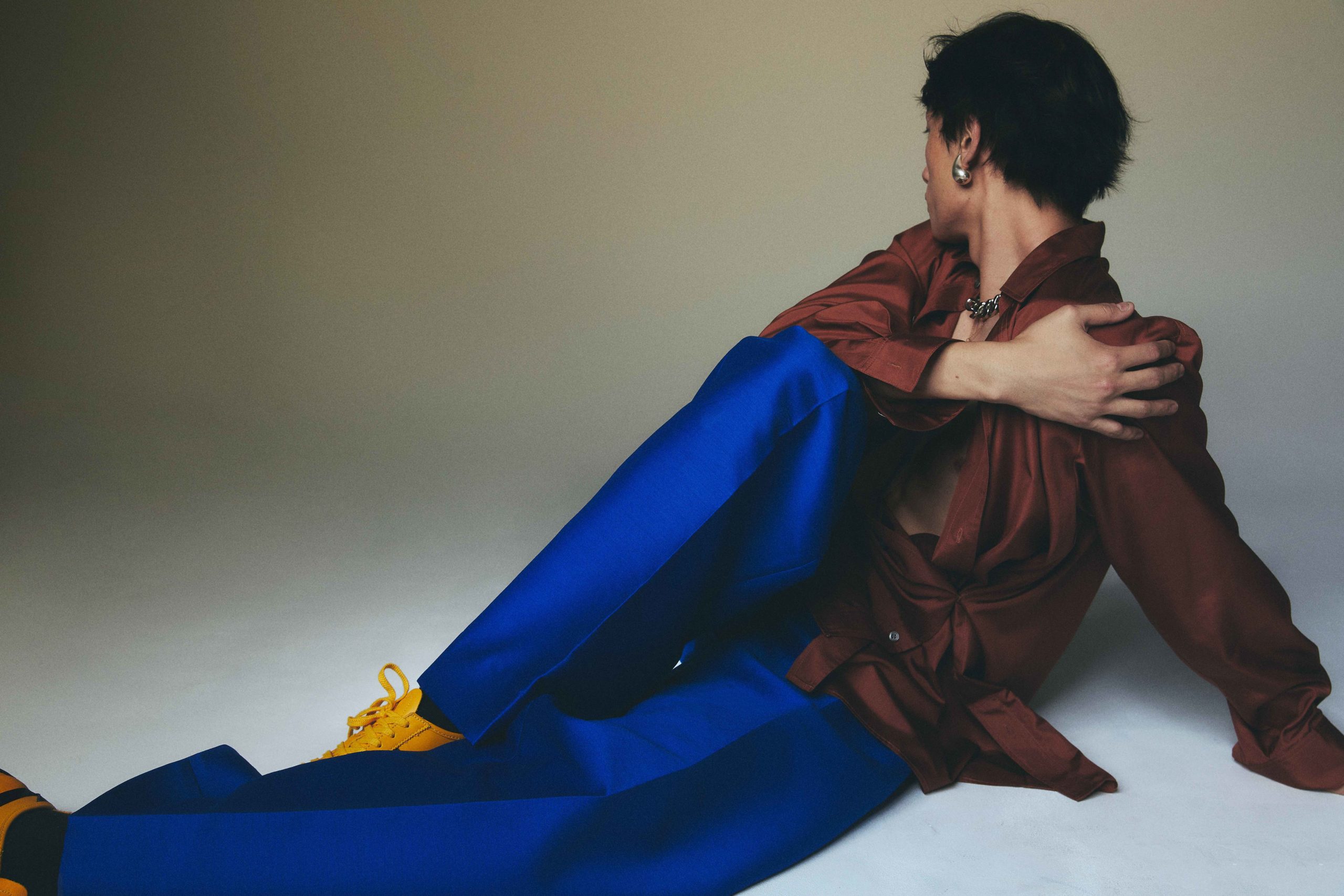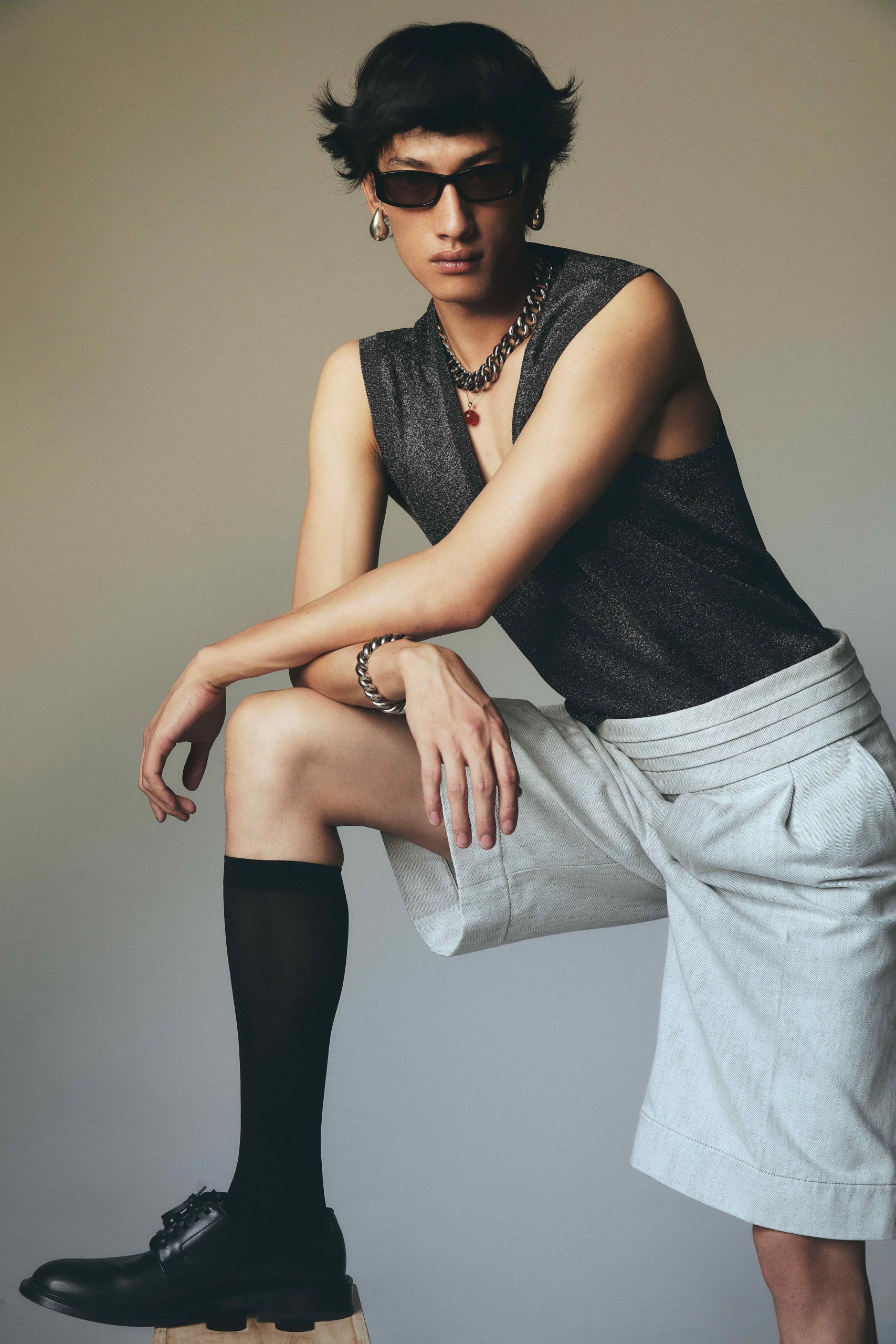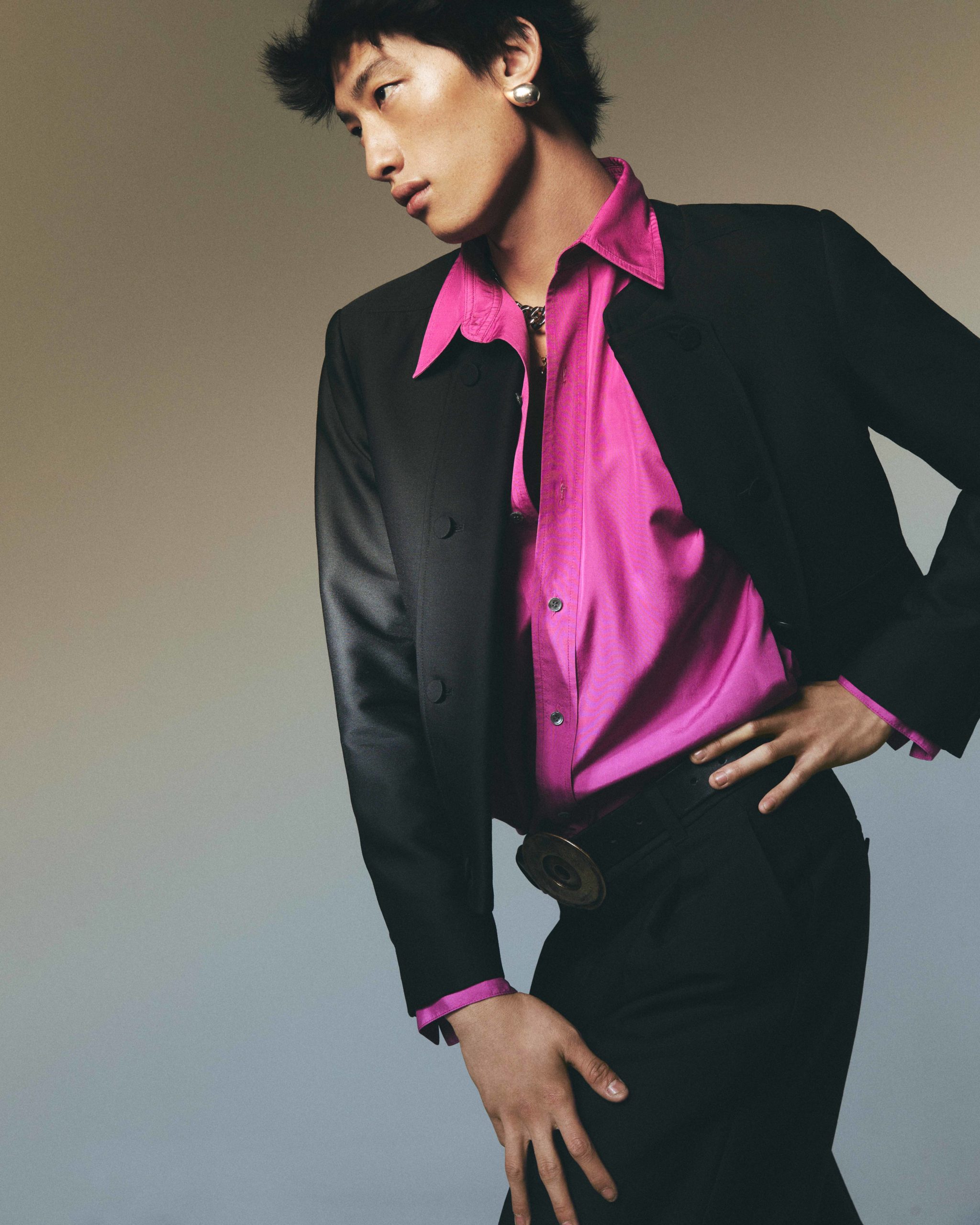Ouer Is Dismantling Menswear As We Know It
The leading designers break down where menswear has gone astray and how we can induce change.

Over the last ten years, we’ve seen an evolution of menswear right before our eyes. Those classic garments of luxury manhood, from the tuxedo to the Oxford button-down, still hold firm in the modern market. Also present is a more future-leaning style, combining streetwear and logomania to feed a new generation of hypebeasts. But where is the in-between? Can we have an evolved form of menswear that avoids these overdrawn masculine tropes but also steers clear of the bawdy and overlarge? Enter Ouer.
Founded by Jeremy Ho and Peter Hu, Ouer intends to form a new vision of luxury men’s clothing that is both experimental and wearable, both boundary-breaking and balanced. Ho and Hu have worked profusely within the fashion world, alums of Thom Browne and Phillip Lim respectively. This experience has given them an inside look at the modern menswear industry, both seeing the grandeur and flaws of modern design. These fashion houses encapsulate so much beautiful history, but also trod upon eurocentric and heteronormative paths. Ho and Hu intend to keep the beauty of their professional lineage, but to mix up the source. Infusing their Chinese-Canadian heritage and queer identity, Ho and Hu draft a new journey for menswear in their designs. Ouer is here to change the landscape, to break the form.

Check out the full interview with Ouer founders Jeremy Ho and Peter Hu below:
VMAN: Thank you so much for taking the time to speak with me today. I want to start with the bare bones of it. How did you two first meet?
Jeremy Ho: We met in business school in Toronto, so we both actually studied finance economics in college. I think the first time we met, we were working on a marketing project for a business conference. I think before that leading up to it, all of our friends around us were always like, “you guys have to meet, You guys would really like each other. You guys would be really good friends.” So we met on that project together and we really bonded over our shared culture, experience, and just things that we liked. And obviously being in business school, then I think we stood out from everyone else because we liked fashion. We dressed differently, so we just like really bonded over that. And we’ve been friends for like 11 or 12 years now. We kind of share the same journey of going from business into fashion and going to school in New York (we went to Parsons as well) and then kind of just growing through that process.
VMAN: I’m curious about how you mesh your two styles. Do you feel like you have very independent visions that then come together? Or is it more cohesive across the board?
JH: I think we both definitely have slightly different, uh, designer aesthetics and things that we’re into, but I think the message and the mission of the brand… I feel like we both share very common understanding and goals of what we want to achieve. So I feel like we’re very aligned on what we want to do. But I think it’s also nice that we both bring different things to the table. Peter has more of a background in sportswear and I have more of a background in tailoring. So then I think we both know how to like mash that together and make something a bit different.
Peter Hu: We’ve also been friends for so long, so we’ve always talked in this very casual way about the things we like. We share a lot of things that we like, honestly, so it’s quite natural and easy and it doesn’t feel like it’s trying to force two things to come together. It’s an easy progression to get from just a friendship to a working relationship.

VMAN: And I’m interested in the temporality of it all. Why right now, what is so pressing about your design or your vision that the world needs to see it right now?
PH: I think, during the pandemic, what we’re really missing was going out and hanging out with our friends. That led us to think about, if we were going out, what kind of stuff would we want to want to wear? And it became the genesis of the foundational kind of idea of what this brand would be. And I also feel like the general climate of culture is people are more open to dressing up, and guys are more open to experimenting. I think that kind of mentality, it really speaks to the way that we want to dress as well. So I think that was like an easy way to concept what the brand would be. And I think right now is actually a good point because there is a gap between the really formal like suiting and stuff like that and the casual, hypebeasty aesthetic. So I feel like there is something in between where we can sit.
VMAN: Going off of that, I’m interested in where you see yourselves within the trajectory of menswear. We fairly quickly went from a lot of people dressing the same way to more experimentation and more going out and trying new things. Where do you see yourselves within that?
JH: Yeah, adding to what Peter was saying, definitely the idea of expanding the wardrobe for menswear is super important to us. When you’re going out, like we were saying, men gravitate towards a suit or a classic button-down. What we want to come in to do is expand what those options could be. And I think inherently that could be a bit queer as well, cause it’s very rooted in self-expression and the design that we want to put forward has a lot of that. So, with Ouer, we hope that we can offer something very different from what everyone has already in the market.

VMAN: You’re pushing me right into my next piece perfectly. I want to harken on the identity piece of it for a little bit. As a queer person, I look at your collection and I see queerness and I see self-expression in it. I wonder how you think that queerness or queer thought has impacted your collection?
PH: I think it is just so inherent to who we are. So when we think about choices that we want to make, and like the fabrics we want to choose and the colors we want to use, it’s kind of a pallet that we can use to self-express. We want to choose something that is more vibrant or something a little bit more fluid. Fluid in the sense that the fabric is a little bit softer and it’s not super stiff. So a lot of those choices just come naturally to us and are the things that we’re gravitating towards. The way that we thought about the brand is like clothing in itself is not gendered, it is the societal expectation put upon clothing that makes it become gendered. So we kind of want to remove that portion of it and kind of just like play. Play with more categories, play with like different fabrics, play with shape and color, all of them. I think it’s rooted in our wanting to express our queer selves and for the collection to be expressive in queerness.
JH: And I think we see in fashion for the last 20, 30, 40 years, the tailoring, the suiting, fabrics, that sort of thing. We wanted to flip that in the brand that we do. So we were using generally more women’s fabrics, kind of like the silky stuff, the more sparkly texture that you would see. Flipping that sort of gender stereotype, I think it’s quite queer in essence.
VMAN: On the flip side of that, I’m curious how you think that your Chinese-Canadian heritage impacts the collection. What’s the influence there?
PH: I think the way that we view fashion has always been through a Eurocentric lens, since fashion as we know it now is coming from France and Italy. Especially in working in the industry for so long, that’s how we’ve always seen it. Like, for example, we always say “that’s chic.” That is a European definition of what stylish would be. So we wanted to really look in and combine that, but move that dial a little bit towards the East Asian aesthetic or an aesthetic that we grew up with that is not necessarily high-brow or necessarily a fashion reference. But obviously, we’re also lovers of fashion, so I think it’s kind of a combination. We want to express our identity through the framework of fashion, but not necessarily through a Eurocentric lens.
VMAN: Absolutely. So I’m curious then about the intersection of the two. What does it mean to be a queer Chinese-Canadian fashion designer creating their own collection?
JH: I think that’s it. I think that’s what we’re trying to say with the brand. It’s what we are trying to explore as well. Both Peter and I grew up between China and Canada and now living in New York, and also just like exploring identity. I think constantly we’re still learning throughout the process. So I think, with the collections itself, we just wanted it to resonate with other people. It doesn’t have to be a very set sort of like one image. But I think we want it to be very diverse and be very open to telling different kinds of stories. It’s not just for people that can see similarities, but I think with people that are different from us, I hope that they can see it and be like, “that’s so different and cool that that’s what I want to try to wear or try to learn about.” And that’s important to us.

VMAN: That’s beautiful. So I want to do a deep dive into the collection. You’re starting your new brand, this is the new image of you. What is the design goal for your first collection (Collection 000)?
PH: For the collection, we wanted to focus on Asian masculinity. Something that is what we talked about is how do we think about menswear now with this idea of recontextualizing Asian masculinity. And then we thought that a lot of the cultural exports within the last 20 years have been mostly like kung fu type of films. That’s the first exposure for the western audience getting to know the visuals or the cultural moments. So we wanted to pay homage to that, but at the same time I think with these types of movies is a stoic heroism of the main protagonist, which is always a masculine man in that definition. So we wanted to subvert that idea as well. So pay tribute to the culture and like how it paved the way, but subvert that with a different type of representation.
VMAN: So within the collection itself, I love your usage of color. It’s such a visual feast to just scroll through your website or to look through the collection imaging. What was the impetus there? What inspired your visualizing of these garments?
JH: I think one of the starting points there is we’re definitely looking at a lot of photos of kung fu films and the colors and vibrancy of it. So that’s how we start conceptualizing what color means to the collection. But I think we’re just naturally drawn to color as people. We definitely wanted to have very toned-down, simple garment shapes and stuff. Let the color and the fabric speak for themselves.
VMAN: It totally pays off, I have to say. So you’re looking back five years, ten years from now, what would’ve made this collection personally a success? What do you hope to get out of this?
JH: I think it’s a really great starting point for us because I think we achieved the things that we set out that we wanted to achieve when we’re discussing it. Exploring, like we were talking about, this Chinese Canadian heritage and the queer experience, paying homage to our culture but also reinventing it in the same way. So I think with the collection, I think we were able to do a lot of those things and still stay true to our design aesthetic and draw from what we have learned in the past and where we have worked and everything. So, yeah, it means a lot to me.
Discover More
